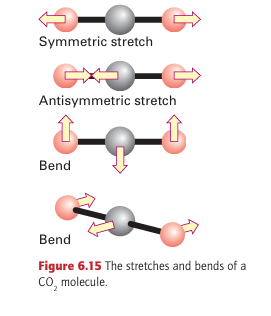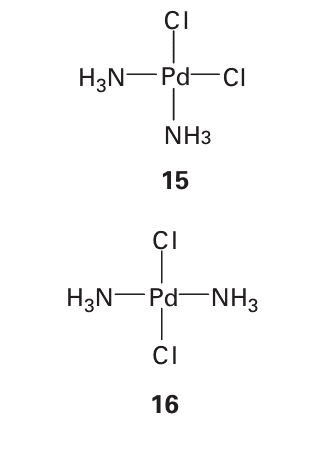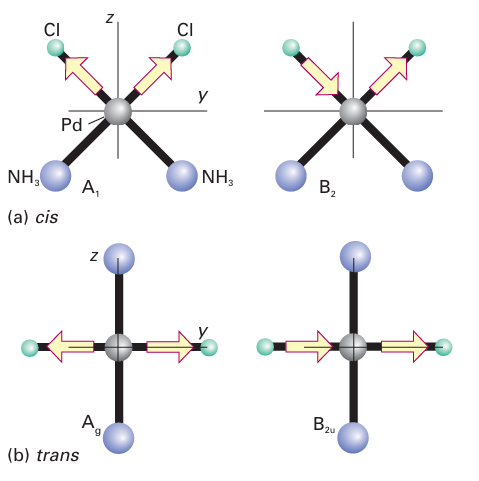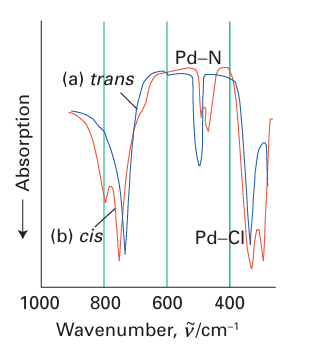

علم الكيمياء

تاريخ الكيمياء والعلماء المشاهير

التحاضير والتجارب الكيميائية

المخاطر والوقاية في الكيمياء

اخرى

مقالات متنوعة في علم الكيمياء

كيمياء عامة


الكيمياء التحليلية

مواضيع عامة في الكيمياء التحليلية

التحليل النوعي والكمي

التحليل الآلي (الطيفي)

طرق الفصل والتنقية


الكيمياء الحياتية

مواضيع عامة في الكيمياء الحياتية

الكاربوهيدرات

الاحماض الامينية والبروتينات

الانزيمات

الدهون

الاحماض النووية

الفيتامينات والمرافقات الانزيمية

الهرمونات


الكيمياء العضوية

مواضيع عامة في الكيمياء العضوية

الهايدروكاربونات

المركبات الوسطية وميكانيكيات التفاعلات العضوية

التشخيص العضوي

تجارب وتفاعلات في الكيمياء العضوية


الكيمياء الفيزيائية

مواضيع عامة في الكيمياء الفيزيائية

الكيمياء الحرارية

حركية التفاعلات الكيميائية

الكيمياء الكهربائية


الكيمياء اللاعضوية

مواضيع عامة في الكيمياء اللاعضوية

الجدول الدوري وخواص العناصر

نظريات التآصر الكيميائي

كيمياء العناصر الانتقالية ومركباتها المعقدة


مواضيع اخرى في الكيمياء

كيمياء النانو

الكيمياء السريرية

الكيمياء الطبية والدوائية

كيمياء الاغذية والنواتج الطبيعية

الكيمياء الجنائية


الكيمياء الصناعية

البترو كيمياويات

الكيمياء الخضراء

كيمياء البيئة

كيمياء البوليمرات

مواضيع عامة في الكيمياء الصناعية

الكيمياء الاشعاعية والنووية
Information from the symmetries of normal modes
المؤلف:
Peter Atkins, Tina Overton, Jonathan Rourke, Mark Weller, and Fraser Armstrong
المصدر:
Shriver and Atkins Inorganic Chemistry ,5th E
الجزء والصفحة:
188-190
2025-08-30
65
Information from the symmetries of normal modes
So far, we have remarked that it is often intuitively obvious whether a vibrational mode gives rise to a changing electric dipole and is therefore IR active. When intuition is unreliable, perhaps because the molecule is complex or the mode of vibration is difficult to visualize, a symmetry analysis can be used instead. We shall illustrate the procedure by considering the two square-planar palladium species (15) and (16). The Pt analogues of these species and the distinction between them are of considerable social and practical significance because the cis isomer is used as a chemotherapeutic agent against certain cancers (whereas the trans isomer is therapeutically inactive (Section 27.18). First, we note that the cis isomer (15) has C2v symmetry, whereas the trans isomer (16) is D2h . Both species have bands in the Pd–Cl stretching region between 200 and 400 cm–1. We know immediately from the exclusion rule that the two modes of the trans isomer


(which has a centre of symmetry) cannot be active in both IR and Raman. However, to decide which modes are IR active and which are Raman active we consider the characters of the modes themselves. It follows from the symmetry properties of dipole moments and polarizabilities (which we do not verify here) that: The symmetry species of the vibration must be the same as that of x, y, or z in the character table for the vibration to be IR active and the same as that of a quadratic function, such as xy or x2, for it to be Raman active. Our first task, therefore, is to classify the normal modes according to their symmetry species, and then to identify which of these modes have the same symmetry species as x, etc. and xy, etc. by referring to the final columns of the character table of the molecular point group. Figure 6.16 shows the symmetric (left) and antisymmetric (right) stretches of the Pd–Cl bonds for each isomer, where the NH3 group is treated as a single mass point. To classify them according to their symmetry species in their respective point groups we use an ap proach similar to the symmetry analysis of molecular orbitals we will use for determining SALCs (Section 6.10). Consider the cis isomer and its point group C2v (Table 6.4). For the symmetric stretch, we see that the pair of displacement vectors representing the vibration is apparently unchanged by each operation of the group. For example, the twofold rotation simply interchanges two equivalent displacement vectors. It follows that the character of each operation is 1:

The symmetry of this vibration is therefore A1. For the antisymmetric stretch, the identity E leaves the displacement vectors unchanged and the same is true of Ϭv, which lies in the plane containing the two Cl atoms. However, both C2 and v interchange the two oppo sitely directed displacement vectors, and so convert the overall displacement into –1 times itself. The characters are therefore

The C2v character table identifies the symmetry species of this mode as B2. A similar analysis of the trans isomer, but using the D2h group, results in the labels Ag and B2u for the symmetric and antisymmetric Pd Cl stretches, respectively.

As we have remarked, a vibrational mode is IR active if it has the same symmetry species as the displacements x, y, or z. In C2v, z is A1 and y is B2. Both A1 and B2 vibrations of the cis isomer are therefore IR active. In D2h, x, y, and z are B3u, B2u, and B1u, respectively, and only vibrations with these symmetries can be IR active. The antisymmetric Pd–Cl stretch of the trans isomer has symmetry B2u and is IR active. The symmetric Ag mode of the trans isomer is not IR active.

Figure 6.16 The Pd Cl stretching modes of cis and trans forms of [Pd (Cl)2 (NH3)2]. The motion of the Pd atom (which preserves the centre of mass of the molecule) is not shown.
To determine the Raman activity, we note that in C2v the quadratic forms xy, etc. trans form as A1, A2, B1, and B2 and therefore in the cis isomer the modes of symmetry A1, A2, B1, and B2 are Raman active. In D2h, however, only Ag, B1g, B2g, and B3g are Raman active. The experimental distinction between the cis and trans isomers now emerges. In the Pd Cl stretching region, the cis (C2v) isomer has two bands in both the Raman and IR spectra. By contrast, the trans (D2h) isomer has one band at a different frequency in each spectrum. The IR spectra of the two isomers are shown in Fig. 6.17.

Figure 6.17 The IR spectra of cis (red) and trans (blue) forms of [Pd (Cl)2 (NH3)2]. (R. Layton, D.W. Sink, and J.R. Durig, J. Inorg. Nucl. Chem., 1966, 28, 1965.)
 الاكثر قراءة في مواضيع عامة في الكيمياء العضوية
الاكثر قراءة في مواضيع عامة في الكيمياء العضوية
 اخر الاخبار
اخر الاخبار
اخبار العتبة العباسية المقدسة

الآخبار الصحية















 "المهمة".. إصدار قصصي يوثّق القصص الفائزة في مسابقة فتوى الدفاع المقدسة للقصة القصيرة
"المهمة".. إصدار قصصي يوثّق القصص الفائزة في مسابقة فتوى الدفاع المقدسة للقصة القصيرة (نوافذ).. إصدار أدبي يوثق القصص الفائزة في مسابقة الإمام العسكري (عليه السلام)
(نوافذ).. إصدار أدبي يوثق القصص الفائزة في مسابقة الإمام العسكري (عليه السلام) قسم الشؤون الفكرية يصدر مجموعة قصصية بعنوان (قلوب بلا مأوى)
قسم الشؤون الفكرية يصدر مجموعة قصصية بعنوان (قلوب بلا مأوى)


















